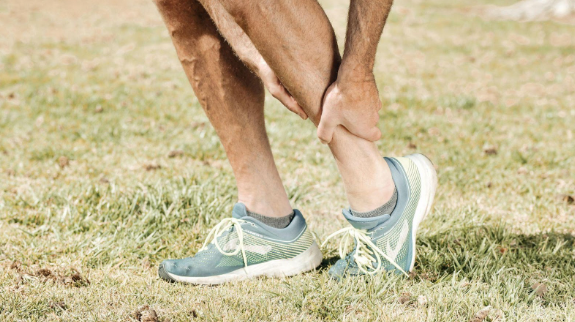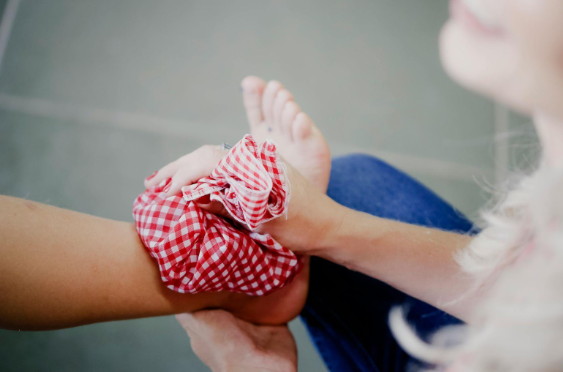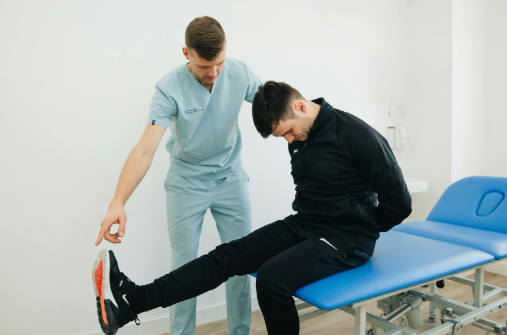Recognizing and Managing Heat-Related Muscle Cramps
Recognizing and Managing Heat-Related Muscle Cramps

Summertime in Arkansas means more time outdoors. But when the temperatures rise, so does the risk of heat-related health issues. One common concern that often gets overlooked is heat-related muscle cramps. These painful spasms can hit without warning and leave you sidelined if not managed properly.
What Are Heat-Related Muscle Cramps?
Heat-related muscle cramps are sudden, involuntary contractions that typically occur during or after continuous physical activity in hot weather. They often affect large muscle groups like the calves, thighs, or the abdomen, and are linked to fluid and electrolyte imbalances. When you sweat excessively, your body loses vital minerals like sodium and potassium. These minerals affect muscle function, and their depletion can lead to painful cramping.
While heat cramps are usually not life-threatening, they are often a warning sign that your body is under stress. Ignoring them could lead to more serious heat-related illnesses like heat exhaustion or heat stroke. That’s why it’s best to take quick action when they arise.
Common Triggers for Heat Cramps
One of the most common triggers for heat cramps is prolonged physical activity in hot and humid environments. Activities like running, biking, or manual labor in the sun can quickly deplete your body’s water and salt reserves. Wearing heavy or non-breathable clothing can also trap heat and contribute to fluid loss.
Another factor is improper hydration before and during activity. Many people think drinking plain water is enough, but when you're sweating heavily, your body also needs electrolytes to function properly. Failing to replace those minerals can disrupt your body's balance and trigger cramps. Even athletes in peak physical condition can fall victim if they’re not paying attention to hydration and electrolyte intake.
Recognizing the Symptoms of Heat Cramps
Heat cramps can feel different from other muscle cramps you may experience during regular exercise since they tend to come on suddenly and can be quite intense. You may feel a sharp, tightening pain in a specific muscle group, and the area may feel firm or knotted to the touch. The cramps can last a few seconds to several minutes and may return multiple times during a single activity.
Along with the cramping, you might notice excessive sweating, fatigue, or mild dizziness. These are all signs that your body is having trouble regulating its internal temperature and staying hydrated. If you experience cramps along with nausea, confusion, or fainting, it could signal a more serious condition, and you should seek medical attention immediately.
Managing Heat Cramps When They Strike
When a heat cramp hits, stop what you're doing right away and rest in a cool or shaded place. Give your body time to recover to prevent more serious complications. Try to gently stretch and massage the affected muscle as well. This can help relieve the spasm and encourage blood flow to the area.
Hydration is important at this stage. Replenish with a sports drink that contains electrolytes or a combination of water and a salty snack to help restore balance. Avoid caffeinated or alcoholic drinks, as they can further dehydrate you.
Cooling down the body can also be helpful. Use a damp cloth or take a cool shower to help lower your core temperature. Once the cramps subside, it’s a good idea to rest for several hours before attempting any strenuous activity again to give your body time to fully recover.
Preventing Heat-Related Muscle Cramps
The best way to manage heat-related cramps is to prevent them from happening in the first place. This starts with proper hydration before, during, and after physical activity. Make it a habit to drink fluids throughout the day, not just when you're thirsty. Thirst is often a sign that your body is already behind on its fluid needs.
It’s also important to prepare your body for hot weather activity. Acclimatizing slowly to heat by gradually increasing your exposure over several days can give your body time to adapt and become more efficient at cooling itself. Choose lightweight, moisture-wicking clothing and take frequent breaks in the shade when outdoors.
When to Seek Professional Help
While heat cramps usually resolve on their own, repeated episodes or persistent discomfort could be a sign of an underlying issue. If your cramps don’t go away with rest and hydration, or if they’re interfering with your ability to enjoy daily activities, it’s worth talking to a healthcare provider.
At
Arkansas Spine and Pain, we understand how disruptive muscle cramps can be. Our team can evaluate your symptoms and recommend treatments or therapies that address your specific needs. If you’ve been experiencing frequent muscle cramps or other heat-related discomfort,
contact us today!



